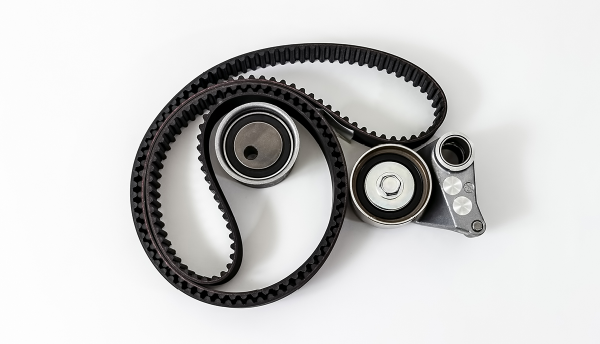
On April 22, 2016, General Motors announced that production at four North American vehicle assembly facilities would be temporarily suspended due to part shortages. The four affected plants were Spring Hill, Tennessee; Lordstown, Ohio; Fairfax, Kansas; and Oshawa Flex Assembly, Ontario, Canada. The carmaker anticipated a two-week shutdown at these plants which deliver a variety of models, including such volume products as the Chevrolet Cruze sedan and the Equinox SUV.
In the announcement covering the ‘temporary adjustment’, GM stated the production shutdown was related to the two major earthquakes in Kyushu, Japan. The second earthquake, a 7.3 magnitude event, occurred on April 16, six days before GM issued the press release. Kyushu is the most southern of the four major islands which make up the Japanese mainland. In addition to a range of other industries, the island has a series of OEM vehicle assembly plants; combined annual output is about 1.5m units. Various tier one suppliers are also located in the surrounding area.
GM has not announced the specific part (or parts) which are in short supply, but according to the Japan External Trade Organization (JETRO), Kyushu is home to a series of companies producing semiconductors. These include Sony Semiconductor Kyushu Corporation, Hitachi LSI Design, Toshiba Corporation, Rohm Fukuoka and Mitsu High-tec. These parts are integral to most vehicle electronics, ranging from ECUs through to infotainment systems.
In 2011, the earthquake and tsunami which impacted Fukushima, Japan and the flooding in and around Ayutthaya in northern Thailand, had far-reaching effects on both the local community and the wider industrial base. Looking at the automotive sector, while these events had little direct impact on automotive assembly – in Thailand, the majority of OEMs are located in Rayong, in the south of the country – both disasters served to disrupt automotive part production at key tier suppliers, with the knock-on effect that most major carmakers were forced to adjust down or halt production due to related part shortages.
In the wake of these disasters most OEMs insisted that they would look to put in place updated sourcing strategies which would reduce the impact of similar events. In a 2012 interview with Supplier Business, Bill Hurles, executive director, Global Purchasing and Supply Chain at GM, commented: “We just had what’s called a ‘Lessons Learned’ session covering what occurred over the last couple of years during crisis situations. Eight or nine of our key suppliers volunteered to talk about what they had learned, what they would do different. The key areas where I think we can all do better, both GM and suppliers, is in contingency planning.”
Hurles went on to say that suppliers working with GM are required to have a back-up capability, a good crisis process, although he stopped short of advocating supply chain redundancy, where two separate supply lines are used to mitigate the loss of a given supplier (largely on the basis of unnecessary cost).
The World Risk Report ranks countries using a risk index, taking into account the frequency of natural disasters in a given country (known as exposure) and how well that country is equipped to manage and recover from a disaster. According to the 2016 report, Japan is the only developed country to have a risk factor of more than 10% due to the high possibility of a natural disaster occurring – the country has the fourth highest ranking in the world. Although heavy investment in disaster impact reduction strategies has helped, with all factors taken into account the island nation is still ranked 17th out of 171 countries covered in the report.
While Japan and the wider region remains a centre for technology development and part sourcing, information such as the World Risk Report, in combination with considerable hindsight, would seem to support the implementation of secondary part sourcing strategies to mitigate the effects of future natural disasters. Such setups would act as supply chain ‘insurance’, helping to guarantee parts were available to support continued production.
In the wake of the disasters in 2011, various assurances were made that supply chain arrangements would be reviewed to prevent such events from having such a widespread impact on global vehicle production. But despite this, the need for GM to stop production at plants in North America due to a natural disaster in Japan highlights that parts are still being sourced out of a high-risk country and, either for cost or technical reasons, there is still no secondary sourcing alternative in place.
Based on annual forecast productions, the two-week shut down across the four assembly plants represents about 30,000 finished vehicles. For its part, General Motors states that this number is not expected to have any material impact on full-year production plans or second-quarter or full-year financial results across North American operations. Like all other OEMs, GM has various routes to regaining lost output, such as added shifts, although many are cost options which would ultimately impact final margins.
Natural disasters such as the earthquakes in Kyushu serve as stress tests for OEM supply chains. Based on the knock-on effects, it appears that there are still some weak links in the GM system. Unfortunately, due its physical location in an active earthquake zone, it is not a case of if but when the next natural disaster strikes Japan. Having secondary sourcing strategies in place might be termed ‘redundant’, but the negative connotations of the word should not prevent OEMs from setting up such supply arrangements to ensure supply of critical parts and minimize risk to vehicle output.








